You already know how much great wine is made in Australia, but what about South African wines?
In this wine guide we cover the renowned Pinotage variety which should be your top pick when venturing into the world of South African wines, along with the top 20 South African wineries which are exported to Australia.
About South African Wines in Australia
Australians and South Africans share a lot in common – a love of sport, outdoor living, barbecues, and the enjoyment that comes from sharing fine wines with good food and good friends.
Like Australia, South Africa boasts some world class wines, and they export both wines and brandies across the globe.
South African wines are distinctively fruit-driven and big on taste, and you will enjoy crisp fruity whites, rich full-bodied reds and a few varieties not common in Australia, including South Africa’s signature red, the Pinotage.
Where to buy?
When you’re out shopping for Aussie wine, why not try one of the fabulous South African wines instead?
You’ll find most of the below names in many wine shops, but as someone who buys a lot of wine I recommend buying online to get the best prices, and usually free delivery. How easy is that?
I’ve found Hairydog have an excellent selection of South African wines, including a range of Pinotage. At the time of writing this guide they have a selection of over 100 South African wines, many of which are excellent choices.
Pinotage: The pick of South African wine
Pinotage is a red wine grape variety which hails only from South Africa.
It stems back to the mid to late 1910s from combining Pinot Noir and Cinsaut grapes. Today Pinotage grapres are widely grown in South Africa and are known for their unique flavour profile – feature notes of dark fruit, smoke, and spice.
The wine made from Pinotage grapes is typically full-bodied with high tannins and moderate acidity, and is often described as having a robust and distinctive taste.
As Pinotage is not available from Australia, when choosing a South African wine this should be your top pick, and I’m sure you’ll be rewarded with its distinct flavour.
As mentioned above, Hairydog should be your go to place to buy as they have a decent selection of Pinotage wines.
Wines of South Africa (Top 20 Wineries)
Whatever South African wine you buy it is likely from one of the below leading wineries. These are considered the top 20 South African wines, and the most popular sold in Australia.
Allesverloren
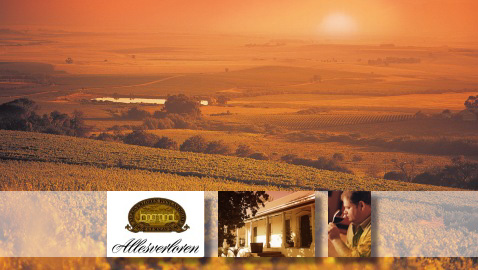
Approximately 100 kilometres northeast of Cape Town lies the Allesverloren estate. Renowned for its distinctive red wines it is the oldest wine estate in the Swartland district having been with the Malan family for five generations.
The Allesverloren vineyards creep up the imposing Kasteelberg in the picturesque Riebeek Valley of the Swartland. The vineyards ranging from 170m above sea level to well over 350m with a variance in rainfall of 200mm.
These various meso-climates provide the ideal conditions for creating big, robust red wines. Cold, wet winters are followed by warm, dry summers when the grapes ripen easily with high concentrations of sugar. Yet the prevailing westerly winds, cool summer afternoons and the shadows of the mountain refresh the vines by late afternoon.
The soils on this Swartland farm are a mixture of shale and weathered sandstone; a stony structure which is crucial to the particular character of Allesverloren’s wines. It accounts for the extraordinary depth which vine roots reach here, thus sustaining strong, healthy vines and resulting in deeply coloured, powerful wines with an excellent concentration of fruit.
Website: Allesverloren
Alto
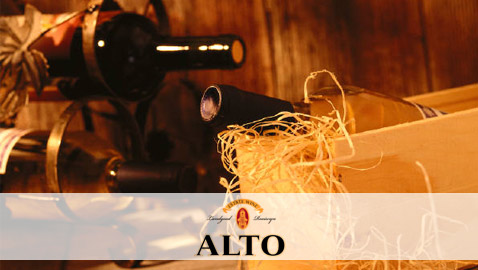
“Great things happen when men and mountains meet”
William Blake
Situated high on the slopes of the Helderberg mountain, the history of Alto dates back to 1693. The Latin name referring to both the aspirations of the estate and its altitude.
The Alto Estate’s sound reputation for producing world-class red wines can be ascribed, in part, to its excellent terroir. It is no coincidence that the area is known, locally, as the Golden Triangle.
The vineyards face north, north-east and north-west. In summer, when the vines are drenched in sunshine, the late-afternoon sea breezes that rise from False Bay cool the grapes, thus lengthening the ripening period and preserving the complex flavours of the noble varietals grown at Alto.
Dry land conditions ensure the vines are shy-bearing, resulting in quality grapes and, consequently, quality wine.
It is this outstanding Alto quality which has won the Estate more than 70 gold medals in open competition with the best wines in the world.
One of South Africa’s most celebrated labels, the Alto Rouge, is a Cape institution for over 50 years and has become known as this country’s “own red blend”.
When asked to name a typical “Cape blend” that is Bordeaux in style, Alto Rouge immediately comes to mind.
Website: Alto
Flat Roof Manor
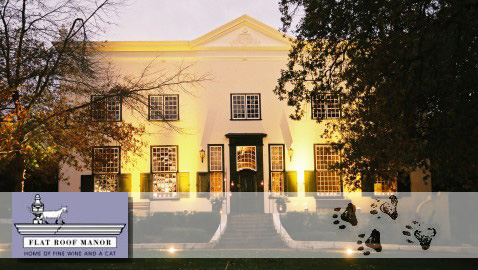
The Flat Roof Manor range by Uitkyk (pronounced ate-cake) derives its name from the 18th century neoclassical manor house at the winery.
Uitkyk has one of only three extant double-storeyed flat-roofed 18th century town houses at the Cape. The manor house, a classical masterpiece in the Georgian style, was completed in 1788 and the design is attributed to the famous French architect, Louis Michel Thibault. Celebrated sculptor Anton Anreith crafted the extraordinary front door that follows the outline of Table Mountain; the same design being repeated on all the inner doors of the homestead.
The Flat Roof Manor label depicts the detailing of the flat-topped roof and features a cat that, according to local legend, stayed long after the original owners had moved on, to lap up the sun on the parapet.
Uitkyk was initially granted as a grazing farm in 1712. In 1929, an immigrant Prussian nobleman acquired the farm and developed vineyards on the high slopes, planting mostly Chenin Blanc, Cape Riesling, Cinsaut and Cabernet Sauvignon.
Today, the boutique wines from the state-of-the-art cellar have established a strong identity for themselves. Although Uitkyk’s individualistic style is reminiscent of the New World, the wines offer the fascination of a captivating Old World heritage.
Vinification follows the single vineyard block principle. For example, the highly prized Cabernet comes from a densely planted block called Bordeaux; the Cabernet-Shiraz blend hails from a grouping of blocks known as Boesmansrug; and the Chardonnay grapes are from picturesque Jakkalskloof.
About 200 hectares of the 600 hectare farm are planted to vines. Slopes range from 200 to 500 metres above sea level. Meso-climates differ considerably and soil types range from decomposed granite to deep, loamy red Table Mountain sandstone.
An interesting variety of cultivars are planted; Chardonnay, Sémillon, Chenin blanc, Viognier, Pinot Grigio, Cabernet Sauvignon, Merlot, Shiraz, Pinotage, Sangiovese, Mourvédre, Petit Verdot and Pinot noir. Progressive viticultural techniques ensure that grapes of exceptional flavour and quality are delivered to the cellar.
Website: Flat Roof Manor
Hill & Dale
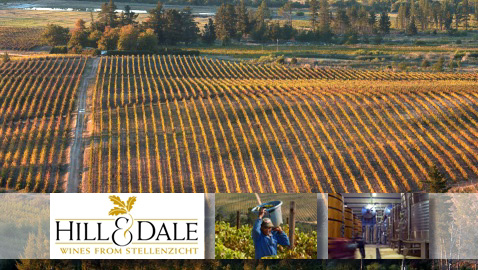
Created by award-winning winemaker Guy Webber, Stellenzicht’s Hill&Dale label offers a range of accessibly styled wines with a New World character for international appeal. Despite their being made for early and easy enjoyment, Webber has eschewed a generic format for these wines, instead choosing to clearly express their origins.
Grapes for Hill&Dale are selected exclusively from Stellenbosch, with an extensive vineyard management programme in place, which includes inputs from international specialists such as world-renowned winemaker, viticulturist and researcher, Pascal Chatonnet and vineyard guru, Dr Eben Archer.
Stellenzicht’s 228 hectares (of which 123 are under vines) are situated on the slopes of the Helderberg Mountain between Stellenbosch and the Atlantic Ocean, in the prime wine-growing area known locally as the Golden Triangle.
Only six kilometres away from the sea, these mountain slopes form a variety of meso-climates ideal for cultivating wine grapes of the highest quality.
Vineyard altitudes varying between 100 and 400 metres above sea level, the pristine sea breezes from False Bay, the sunshine on the hills and the great variety of soils at Stellenzicht all play their part in creating a terroir for growing grape varieties of the highest quality.
Since 1996 Stellenzicht boasts a reputation as one of the top five farms in the Cape wine industry. In its modern cellar with state-of-the-art facilities, a range of stunning wines are produced: winners of numerous international and national awards.
Website: Hill & Dale
Jacobsdal
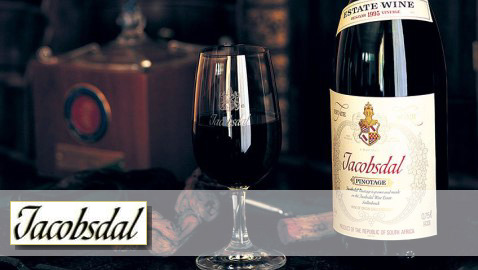
Jacobsdal is situated between Stellenbosch and Kuils River on the slopes of the hills overlooking False Bay. ten kilometres away.
The Dumas family has been making wine on the estate for three generations. The present farmer and winemaker on the family-owned estate are Cornelis and his son Hannes.
The estate is 260 hectares in size, of which 92 hectares are planted with vineyards. Grown as bush vines, the crop is limited by extensive pruning, making it possible to produce quality grapes under absolute dryland conditions.
At Jacobsdal something of the “Old World” lives on. Here wine farming is a creative act, and dedication to soil and vine a way of life. The wine is made with minimal intervention. No cultured or selected yeasts have ever been used in the Jacobsdal cellar.
The wine is produced using traditional French techniques. The must is fermented in open concrete tanks. Fermentation is allowed to develop spontaneously from the natural yeast cells on the grape skins.
Colour and flavour is extracted by punching down the cap regularly into the fermenting juice, using only the free-run juice when separating the juice from the skins. This method allows for subtler but deeper flavours where tannins are less evident.
After malolactic fermentation the wine is racked from the lees and matured in small casks of French oak for 18 months before bottling.
Website: Jacobsdal
Klipdrift
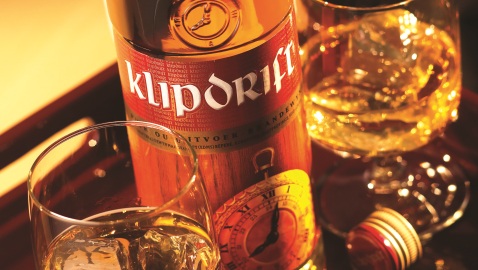
Klipdrift is a South African icon with a heritage that spans close to a century.
The first Klipdrift brandy was blended, bottled and sold from the farm Klipdrift near Robertson in January 1938. At first the owner and cellarmaster, JP Marais, made limited quantities of this exclusive brandy available, selling it by means of direct mail order.
Realising that consumers insisted on brand names, he started marketing Klipdrift Export Brandy to hotels and clubs, thus perpetuating his name as a blender and cellar master of repute.
The true art of brandy making comes to the fore in the degree of maturation of distillates and choice of components for blending. Today, Brandy Master Johan Venter continues the tradition of excellence to produce one of South Africa’s favourite brandies that is appreciated around the world.
Website: Klipdrift
Le Bonheur
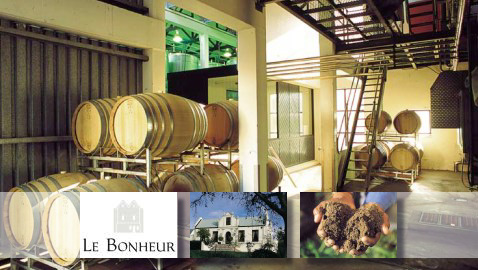
This 163-hectare estate with the optimistic name of Le Bonheur (“Happiness”) is situated along the slopes of the Klapmuts Hill in the northern reaches of the Simonsberg Mountain, in the Stellenbosch Wine of Origin district. Klapmuts is the old Dutch word for the 18th century cocked hat that folded away into the saddle back pocket and, indeed, when observed from a distance, the hill resembles such a hat.
Le Bonheur, formerly known as Oude Weltevreden (“Well Satisfied”), dates back to the late 18th century and was an important venue for travellers in the Cape, offering fresh spring water and an outspan area at the major junction of Cape Town, Paarl, Stellenbosch and Malmesbury.
Le Bonheur has been completely redeveloped to become one of the leading estates in the winelands of the Cape and draws wine lovers who are content to sip fine quality wines, and enjoy the seemingly timeless atmosphere of the Estate.
Le Bonheur has an enviable terroir. Most of the 65 hectares of vineyards face north, while a few face east and south-east. The vineyards are situated at different altitudes from 200 to 350 metres above sea-level, and each has its own, unique soil characteristics. There are four basic soil types at Le Bonheur; decomposed granite, red loam, sand, and sand over pot clay. Winemaker Sakkie Kotzé harvests wines of excellence from these soils of Klapmuts Hill.
Four years of painstaking labour went into perfecting the structure and composition of the soil before entrusting the vines to it. The improvement and restructuring of Le Bonheur’s soils have been modelled on those of the famed vineyards of France. Today, they contain all the minerals and other nutrients needed for growing the top-performing varieties of Cabernet Sauvignon, Merlot, Chardonnay and Sauvignon Blanc. Of these varieties, the best clones were selected to suit the Estate’s climate and soils. The Chardonnay vines are rooted in areas with well-drained soil and maximum exposure to the sun. Most of the Sauvignon Blanc vines are planted on the lower slopes in cooler clay soils. The higher-lying vineyards with their red loam and decomposed granite soils have proved to be ideal for the cultivation of the shy-bearing Cabernet Sauvignon and Merlot vines.
Rainfall occurs in winter, with an annual average of 800 – 900 mm. In summer, the vineyards are cooled by southeasterly winds and the crisp mountain air.
Winemaker Sakkie Kotzé’s dedication and attention to detail really come to the fore once the grapes are ripe and ready to be harvested. The bunches are carefully picked by hand and placed in small baskets to prevent the fruit from bruising. The grapes are then hand-sorted, and only bunches passing exacting scrutiny are selected for fermentation. The reason is simple; “If the best French chateaux take the trouble to sort their grapes, so can we.”
Not surprisingly, Le Bonheur’s wines are acclaimed overseas, and have won prestigious awards and Gold medals at top international wine competitions.
Lomond
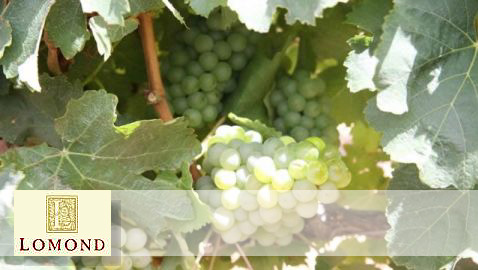
Lomond Wines was established in July 2004 taking its name from the Ben Lomond Mountain that runs through the farm, constituting the upper north-western slopes of the farm.Lomond is located at a very southerly latitude – 34° 34” south and is one of a handful of wine farms with a Cape Agulhas appellation of origin. Located about 8 km from the sea there is relatively little variation in day-night temperatures throughout the year. It is kept cool by the southwesterly and southeasterly winds during the summer months. The prevailing cool temperatures mean that vineyards tend to ripen several weeks later than their Stellenbosch counterparts, with harvesting taking place towards March.
Altitudes vary, with some blocks around 50 m above sea level, while others are located around 100 m above sea level, with an unhindered exposure to the sea. However, even the lowest-lying vineyards still benefit from the cool maritime winds.
Lomond’s geological formations are also unique. The intrusion of granite gives a totally different soil pattern to that of the surrounding Table Mountain sandstone formations, making for a very marked diversity of soil types on the farm.
A joint venture between South Africa’s leading liquor producer and marketer Distell and Lomond Properties, Lomond Wines takes what it requires for production of its own wines, while Distell buys the balance for its limited-edition boutique ranges.
Still under development Lomond covers 800 ha and will ultimately plant 400 ha of vineyards. Feeding the property and the local community is a dam that to date spans an area of 108 ha, runs a length of 3.5 km and has a 6 million cubic meter capacity.
In 2005 Distell funded the purchase of a 79 ha farm, neighbouring Lomond, called Uylenkraal. It is being developed as a broad-based BEE (Black Economic Empowerment) venture where farm workers associated with the Lomond and Uylenkraal farming operations will own at least 26% of the company.
Lomond Wines and Distell are providing training in farm management and viticulture to the farm workers concerned and Distell is also funding the establishment of 46 ha of vineyards to be planted from 2006 on Uylenkraal. These will include Sauvignon Blanc, Pinot Noir, Cabernet Sauvignon and Nouvelle.
Lourensford
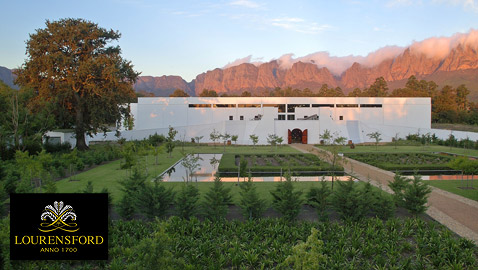
Lourensford Estate, established in the year 1700 is arguably one of the most beautiful wine estates in the world. Steeped in history and heritage, the estate also boasts an ultra-modern winery utilising technology unique in the Southern Hemisphere.
The magnificent soils and diverse micro-climates create the ideal terroir for world-beating wines. Lourensford is fast-becoming one of the biggest wine estates in South Africa, with over 300 hectares of vines already planted.
Nature, experience dedication, the terroir of Lourensford combine to create sensational fruit-driven tastes and a wine that can be enjoyed while sitting under an oak tree next to a river or a the thrill of a win at the races with good company.
The rich soils and advanced cellar have already yielded such champions as the Lourensford 1700, a striking blend of Cabernet Sauvignon, Merlot and Shiraz, and the Lourensford Viognier, truly an exceptional and delightful Chardonnay-style wine.
The Five Heirs premium range is yours to enjoy every day while the ultra-premium Estate Range is sure to impress on those special occasions.
The extensive wine portfolio and the beautiful natural environment make Lourensford an estate to feast your senses.
Website: Lourensford
Môreson
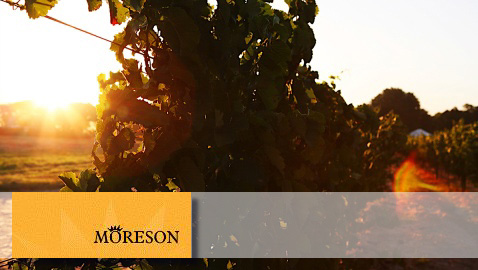
Môreson is a little slice of magic. A tranquil paradise located at the end of the aptly named Happy Valley Road. The Môreson environment is the perfect retreat from the hectic pace of modern day life.
The atmosphere and setting will transport you back to a time when your life was less cluttered. You will find that shortly after arriving you are standing a little taller, walking a little slower and smiling a lot more.
Whether it’s a glass of their award winning wine, a meal at their vineyard restaurant Bread & Wine or a sleep over in their very own Winery House, you’ll be able to taste the passion, see the magic and feel the love.
Nederburg
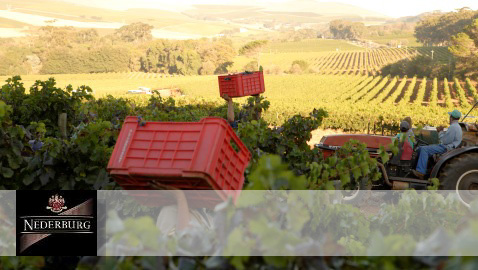
Established in 1791 close to the historic village of Paarl, Nederburg has been at the forefront of South African winemaking for over 200 years.
The seamless melding of the historical and the modern is evident in the exquisitely restored manor house dating back to 1800 and furnished with carefully selected period pieces. Situated adjacent to a brand new cellar, technologically advanced equipment combines with oak barrels made in the time-honoured way by some of the world’s best coopers in France, Eastern Europe and America. Visitors can gaze out at the statuesque mountains or the exquisitely laid out vineyards while sipping wines in the tasting room that is the epitome of cosmopolitan chic.
Internationally acclaimed cellarmaster Razvan Macici is supported by two winemakers who work closely under his direction. Wim Truter produces the red wines, Tariro Masayiti makes the whites and every year the team brings the best of the vintage to winelovers throughout the world.
With their hallmark of finesse and fruit, Nederburg wines appeal to a broad range of wine lovers, from connoisseurs and collectors to those seeking everyday drinking pleasure and newcomers to wine. The same painstaking attention to detail is applied to hand-crafted, limited edition wines as to those intended for wider enjoyment.
Celebrated internationally for outstanding quality Nederburg has won more local and international awards than any other wine producer in the country.
Website: Nederburg
Neethlingshof
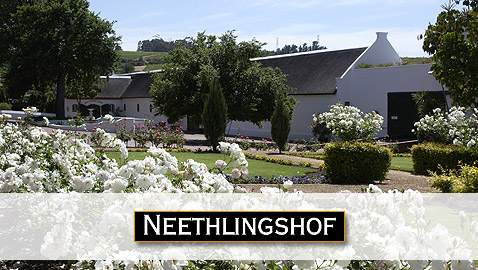
“History in the Making.”
Neethlingshof Estate
Neethlingshof Estate lies in the very heart of the Cape’s winelands in the Stellenboschkloof, flanked by the Bottelary Hills and Papegaaiberg Mountain just outside the town of Stellenbosch.
An imposing, kilometre long stone pine avenue leads you to the heart of one of the most beautiful properties in the Cape Winelands. The estate unfolds before your eyes complete with pristine Cape Dutch buildings, rolling green vineyards and a cosy cellar.
There are many natural advantages contributing to the production of the fine, characterful wines at Neethlingshof: a variety of high potential soils derived from decomposed granite, gentle slopes and valleys offering a choice of aspects, the cooling effect of the nearby Atlantic Ocean on the vineyards during the ripening season, and an altitude which varies between 85 and 250 metres. Of the Estate’s 273 hectares, 165 are under vines.
The variety of cultivars grown on Neethlingshof gives the winemaker, De Wet Viljoen, an enviable opportunity to craft fine varietal wines and exciting blends which are winners of numerous awards. Neethlingshof shines as brilliantly on the international front, showing that the wines from this estate appeal to palates around the world, just as much as to those at home.
Website: Neethlingshof
Plaisir De Merle
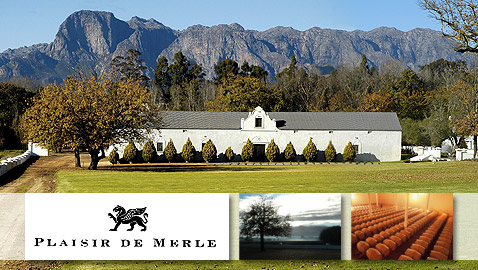
“Never Fails to Impress”
Myself
Across the rolling foothills of the majestic Simonsberg Mountain thriving vineyards of the Plaisir De Merle estate produce grapes of exceptional richness and quality.
When you savour a Plaisir de Merle vintage, you’ll not simply be enjoying the balance and finesse of a world class wine, but a palate rich with heritage and historical undertones.
Plaisir de Merle’s wines focus on noble cultivars only. It is a philosophy inspired by the soil and founded upon the firm belief that the grapes grown here would produce wines of a singular character in the classic style. It is a decision driven by the desire to make the best wine possible; big with ageing potential yet fruity and ready to drink while relatively young.
Strict adherence to the harmonious integration of vineyard practice with modern wine-making techniques have left renowned Cellar Master Neil Bester free to naturally influence the wine making process. These are wines that preserve the memory of the soil and the idiosyncrasies of the vines from which they come. The wines are true to their signature identity which will always remain personable yet stylish, earthy yet refined.
Website: Plaisir
Richelieu
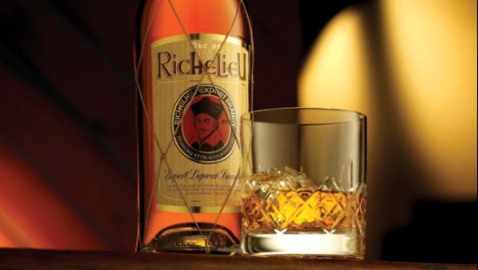
Rich, Rewarding, Richelieu. The brandy in the age-old French tradition.
Richelieu brandy is steeped in the tradition of the French brandy master’s art; the age-old skill of combining breeding, purity, mellowness and maturity to produce a rich and rewarding, full-bodied brandy.
The brandy is double distilled in French copper pot stills which contribute to its rich and rewarding full-bodied character. During this process, the brandy is subjected to the strictest quality controls, ensuring brandy of the highest quality.
The mysterious maturation process takes place in casks of imported French oak, where the subtle interaction of wood, spirit and air creates Richelieu’s special smooth character. Finally the brandy is blended to a special secret recipe – an art that relies solely on the brandy master’s highly developed sense of taste and smell.
The soft, round flavours and golden taste of Richelieu can only be achieved through the skills and patience attained through age-old traditions handed down from generation to generation.
Website: Richelieu
Rietvallei
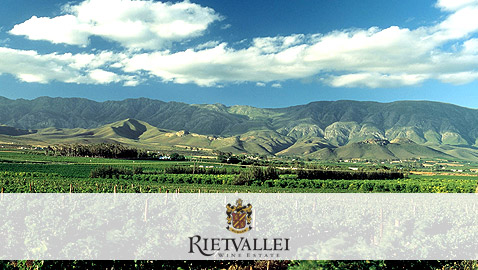
Rietvallei Wine Estate is family owned and one of the oldest Muscadel farms situated in the Klaas Voogds area, eight kilometres east of Robertson.
Rietvallei started in 1864 when Alwyn Burger began making the Red Muscadel which was for years the only wine featured on the Rietvallei portfolio.
Today, his great great grandson, Johnny Burger, is the fifth generation on the farm and Kobus Burger the sixth generation of the Burger family is the estate’s winemaker. Together father and son oversee the process from viticulture to vinification and produce Rietvallei’s prestigious range of wines.
Planted deep in fertile soils on the slopes of the Langbeberg foothills trellised vines spanning 180 hectares climb the cool south-eastern slope. Nestled in the shade, protected against the afternoon sun, these vines enjoy a deep winter sleep in the cold earth. The winter dormancy is essential for the vines to recover, so that in summer they can produce fine, healthy grapes. In Summer early morning mists often shroud the vines while cooling Indian Ocean breezes allow the grapes to ripen slowly and develop their sugars.
The red wine making is conducted in open fermenting tanks using traditional methods to maximise flavour. With white wine making ultra modern techniques are used with cold fermentation in stainless steel tanks.
Rietvallei have built an enviable international reputation for their portfolio of fine wines catering for almost every taste.
Website: Rietvallei
Saxenburg
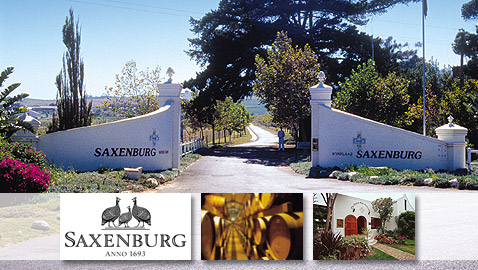
Established in 1701, Saxenburg farm is over 200 hectares, with some 90 hectares planted to vineyards. The largest plantings are denoted to Shiraz, followed by Cabernet Sauvignon, Sauvignon Blanc, Merlot and Pinotage. The balance is made up of Chardonnay, Viognier, Cabernet Franc and Malbac, respectively.
The vineyards enjoy ideal soil and climatic conditions aided by the cool breezes from False Bay during the summer months. Along with a policy of summer pruning this ideal climate delivers low-yield vineyards grapes of the highest quality.
Saxenburg wines are based on a simple philosophy: “A wine signifies a place, what the French call terroir. The better the place is known and understood the better the wine.”
Great wines require great fruit. Wine growing, not winemaking, is the secret behind great vintages. If the selection of grapes in the vineyard is right, one does not need fancy tricks in the cellar. The best treatment for wine is no treatment.”
Website: Saxenburg
Stellenzicht
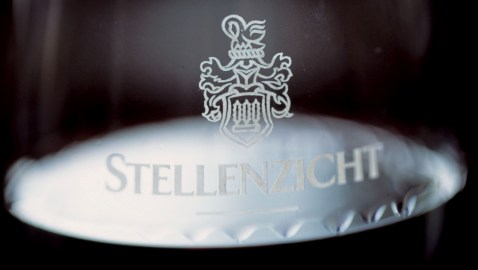
“Discover the secrets of the Golden Triangle.”
Stellenzicht’s 228 hectares (of which 123 are under vines) are situated on the slopes of the Helderberg Mountain between Stellenbosch and the Atlantic Ocean, in the prime wine-growing area known locally as the Golden Triangle.
Only six kilometres away from the sea, these mountain slopes form a variety of meso-climates ideal for cultivating wine grapes of the highest quality.
Vineyard altitudes varying between 100 and 400 metres above sea level, the pristine sea breezes from False Bay, the sunshine on the hills and the great variety of soils at Stellenzicht all play their part in creating a terroir for growing grape varieties of the highest quality.
Since 1996 Stellenzicht boasts a reputation as one of the top five farms in the Cape wine industry. In its modern cellar with state-of-the-art facilities, a range of stunning wines are produced: winners of numerous international and national awards.
Website: Stellenzicht
Theuniskraal
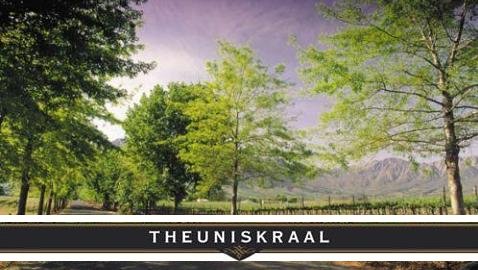
Theuniskraal lies in the heart of the historic Land of Waveren about 7km north of the village of Tulbagh, tucked into the Winterhoek Valley which is formed by the Witzenberg Mountains to the east, the Obiqua range to the west and the Winterhoek Mountains to the north.
These mountains form important watersheds and are the main sources of the three most significant rivers in the Western Cape, the Berg, Breede and Oliphants. The second highest peaks in the Western Cape are also found in these mountains.
Situated 2 050m above sea level, they are regularly snow-clad in winter, giving the vines the opportunity to go into proper dormancy, essential for late-budding varietals such as Cape Riesling and Chardonnay.
Intense cold leads to more even budding in spring, which beneficially impacts on grape quality. Grapes harvested in the cool of the morning are ripe, crisp and flavour-filled when they reach the cellar. Gentle handling and minimum manipulation preserve that flavour through all stages of wine making.
The farm has been in the Jordaan family since 1927, and the proud tradition of winemaking is now in the hands of the third generation. In 1948 Theuniskraal launched the estate’s first Riesling and a South African icon was born. Natural farming methods combine happily with technology to bring out the best in each harvest.
Currently, there are 140 hectares under vine, planted to ten varietals. All vineyards are trellised and receive supplementary irrigation. The most significant varietals on the farm are Cape Riesling, Chardonnay and Semillon.
Website: Theuniskraal
Tukulu
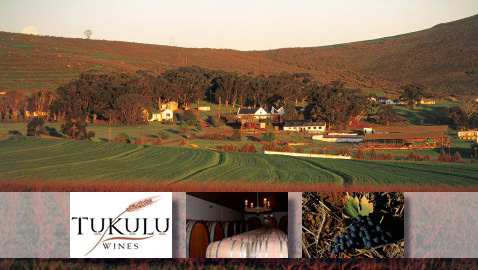
“Tukulu – Gifts from the Soil.”
Nestled against the Dassenberg in the traditional wheatlands of Darling the farm Papkuilsfontein is the home of Tukulu wines and a devotion to the cultivation of noble grape varietals.
Just 25 km from the sea the farm enjoys cool temperatures and is protected from the harsh winds by the surrounding hills. In a climate influenced by cooling sea breezes and the rich, deep red, fertile Tukulu soils, quality wines are born.
Low yielding vineyards and a few months of barrel maturation produce award winning wines described as mouth filling with melon flavours on the nose and a hit of musk on the palate.
Tukulu is a benchmark of “New South Africa” pride and progress. Tukulu takes its name from the predominant soil type on the farm. The lush red soil is known for its excellent water retention capacity in the lower levels, which provides the ideal growing medium for dryland vines.
A key element of the joint venture is the skills transfer programme spearheaded by Nederburg Wine Farms. While developing and managing the viticultural side of the project, the highly-skilled team provides on-the-job mentoring. For formal and tertiary training, bursaries are made available to members of the local community to study winemaking.
Website: Tukula Wines (on SA Venues)
Uitkyk
Established in 1712, the Uitkyk estate is steeped in the traditions of the Cape.
Situated just outside Stellenbosch, Uitkyk (pronounced ate-cake) means “lookout”, for dotted all over the 600 hectare farm are magnificent viewsites offering incomparable vistas of the Cape Peninsula, False Bay and Table Bay.
Uitkyk has one of only three extant double-storeyed flat-roofed 18th century town houses at the Cape. The manor house, a classical masterpiece in the Georgian style, was completed in 1788 and the design is attributed to the famous French architect, Louis Michel Thibault. Celebrated sculptor Anton Anreith crafted the extraordinary front door that follows the outline of Table Mountain; the same design being repeated on all the inner doors of the homestead.
In 1929, an immigrant Prussian nobleman acquired the farm and developed vineyards on the high slopes, planting mostly Chenin Blanc, Cape Riesling, Cinsaut and Cabernet Sauvignon. Uitkyk soon became well-known for its Carlonet, a blend made from Cabernet and Cinsaut. Remaining bottles of this wine have become sought-after collector’s items.
Today, the boutique wines from the state-of-the-art cellar have established a strong identity for themselves. Although Uitkyk’s individualistic style is reminiscent of the New World, the wines offer the fascination of a captivating Old World heritage.
Vinification follows the single vineyard block principle. For example, the highly prized Cabernet comes from a densely planted block called Bordeaux; the Cabernet-Shiraz blend hails from a grouping of blocks known as Boesmansrug; and the Chardonnay grapes are from picturesque Jakkalskloof.
About 200 hectares of the 600 hectare farm are planted to vines. Slopes range from 200 to 500 metres above sea level. Meso-climates differ considerably and soil types range from decomposed granite to deep, loamy red Table Mountain sandstone.
An interesting variety of cultivars are planted; Chardonnay, Sémillon, Chenin blanc, Viognier, Pinot Grigio, Cabernet Sauvignon, Merlot, Shiraz, Pinotage, Sangiovese, Mourvédre, Petit Verdot and Pinot noir. Progressive viticultural techniques ensure that grapes of exceptional flavour and quality are delivered to the cellar.
Website: Utikyk
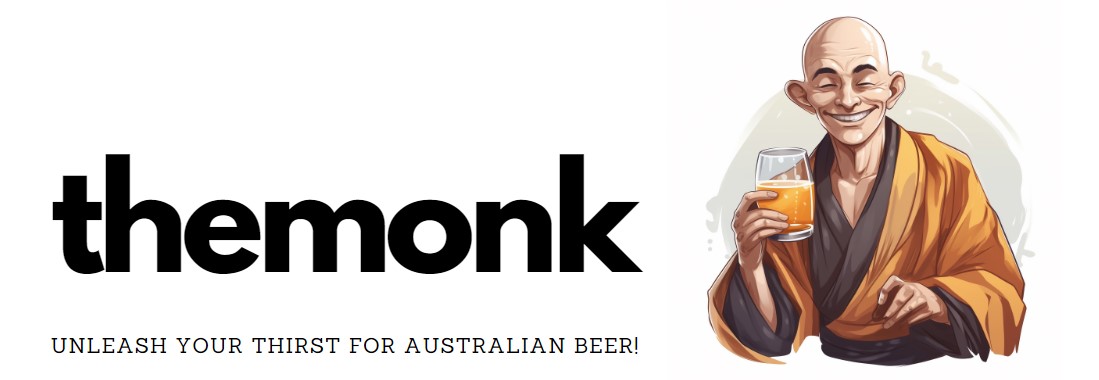
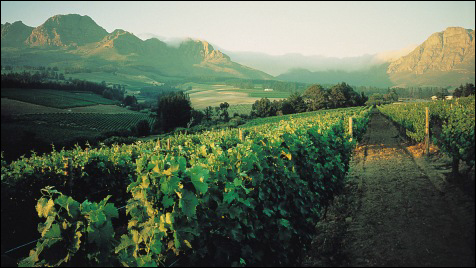
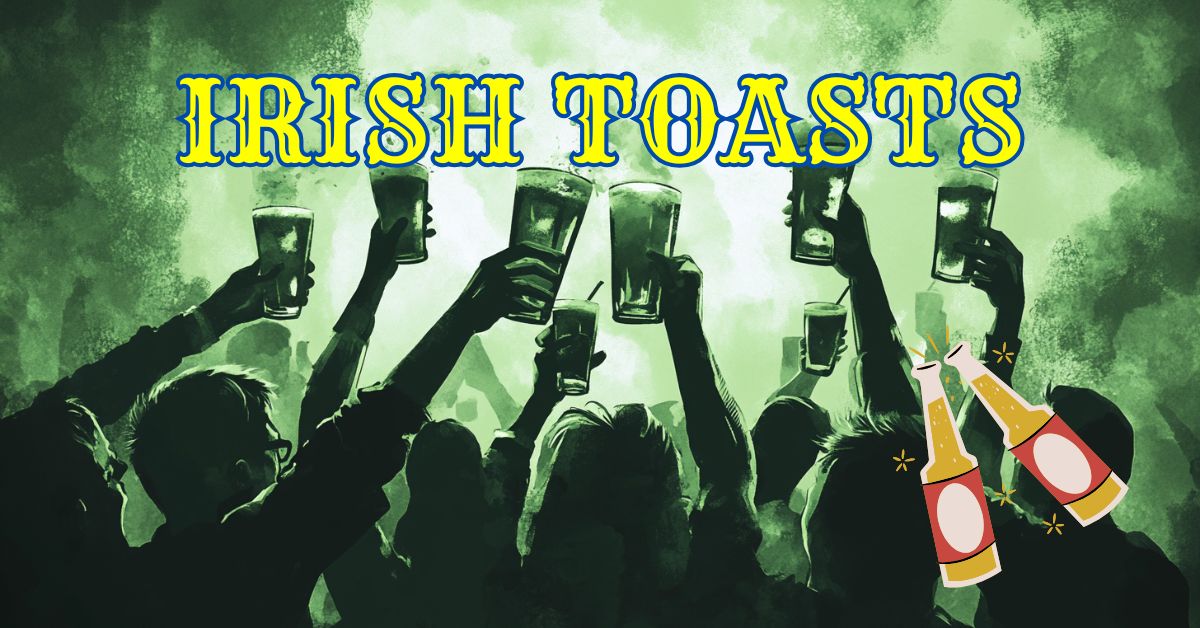
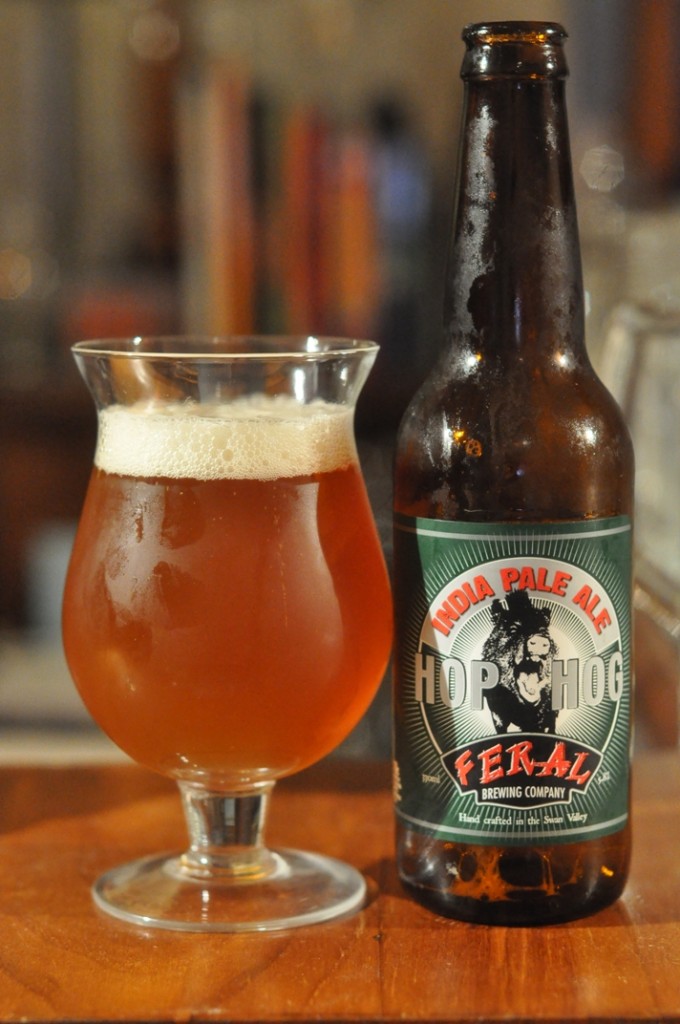
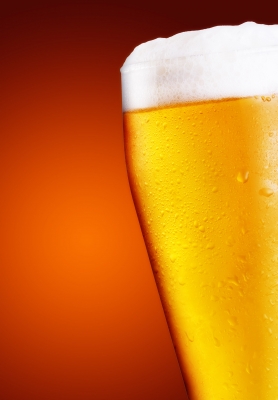
Leave a Reply